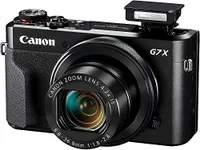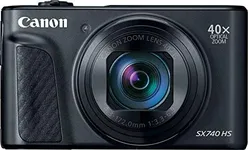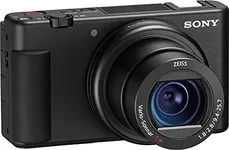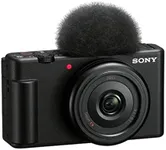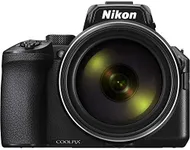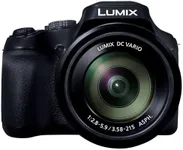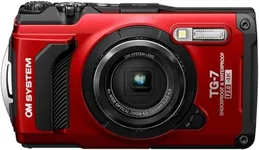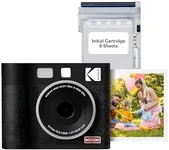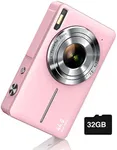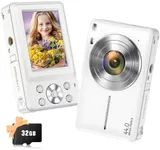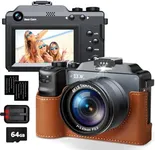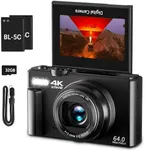Buying Guide for the Best Point Shoot Cameras
Point-and-shoot cameras are a great choice for those who want to capture high-quality photos without the complexity of a DSLR or mirrorless camera. These cameras are compact, easy to use, and often come with a variety of automatic settings that make photography simple and fun. When choosing a point-and-shoot camera, it's important to consider several key specifications to ensure you get the best fit for your needs. Here are the most important specs to look at and how to navigate them.MegapixelsMegapixels refer to the resolution of the camera's sensor, which determines the detail and clarity of your photos. Higher megapixels mean more detail, which is important if you plan to print large photos or crop images without losing quality. For everyday use and sharing on social media, a camera with 12-20 megapixels is usually sufficient. If you need more detail for professional work or large prints, look for cameras with 20+ megapixels.
Zoom RangeThe zoom range of a camera indicates how much you can magnify your subject. Optical zoom is more important than digital zoom because it uses the camera's lens to bring the subject closer without losing image quality. A zoom range of 3x to 5x is good for general use, while a range of 10x or more is ideal for capturing distant subjects, such as wildlife or sports events. Consider your typical shooting scenarios to determine the right zoom range for you.
Sensor SizeSensor size affects the camera's ability to capture light and detail. Larger sensors generally produce better image quality, especially in low light conditions. Common sensor sizes in point-and-shoot cameras include 1/2.3-inch, 1-inch, and APS-C. A 1/2.3-inch sensor is standard for casual photography, while a 1-inch sensor offers better performance for enthusiasts. APS-C sensors are rare in point-and-shoot cameras but provide excellent image quality for more serious photographers.
Image StabilizationImage stabilization helps reduce blur caused by camera shake, which is especially useful in low light or when using a long zoom. There are two types: optical and digital. Optical stabilization is generally more effective as it physically adjusts the lens or sensor to counteract movement. If you often shoot in challenging conditions or without a tripod, look for a camera with good optical image stabilization to ensure sharp photos.
Video CapabilitiesMany point-and-shoot cameras can also record video. The resolution and frame rate are key factors to consider. Full HD (1080p) is sufficient for most users, but if you want higher quality or plan to do professional video work, look for cameras that offer 4K resolution. Additionally, consider the frame rate; 30fps is standard for smooth video, while 60fps or higher is better for capturing fast action or creating slow-motion effects.
Battery LifeBattery life determines how long you can use the camera before needing to recharge or replace the battery. This is especially important if you plan to use the camera for extended periods, such as during travel or events. Look for cameras with a battery life of at least 200-300 shots per charge for general use. If you need more endurance, consider models with higher capacity batteries or the option to use external battery packs.
ConnectivityConnectivity options like Wi-Fi, Bluetooth, and NFC allow you to easily transfer photos to your smartphone, tablet, or computer. This is convenient for sharing images on social media or backing up your photos. If you value quick and easy sharing, look for a camera with built-in Wi-Fi or Bluetooth. Some cameras also offer GPS for geotagging your photos, which can be useful for travel photography.
